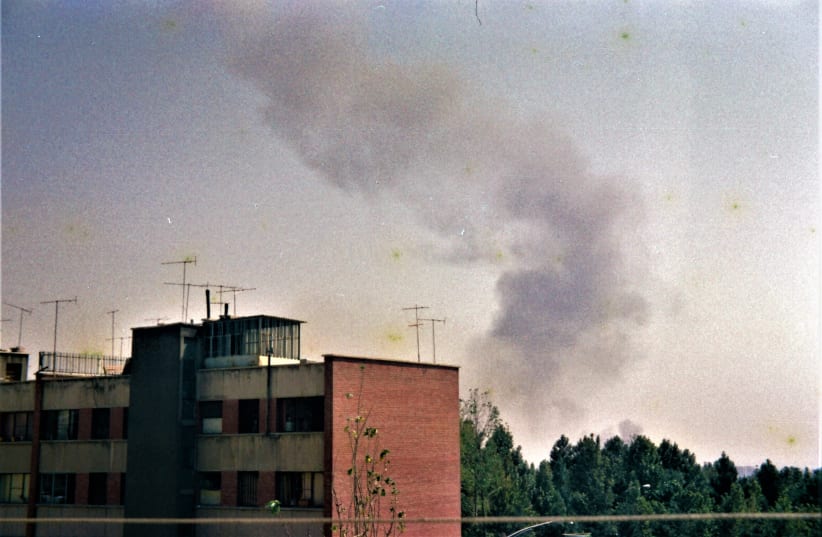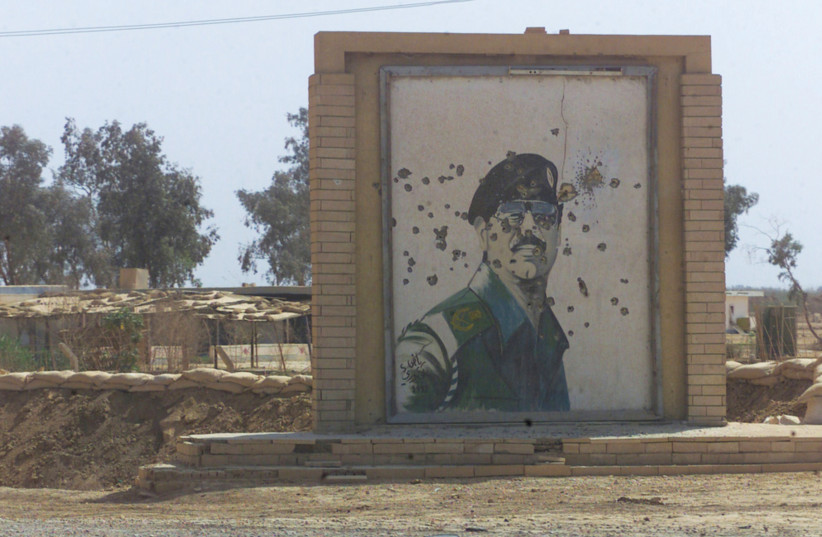September 22, 2021 marks 41 years since the Iraqi invasion of Iran, lasting two months and beginning the nearly decade-long Iran-Iraq War.
The background for the conflict is rooted in existing tensions between the two Middle Eastern nations and a desire by then Iraqi leader Saddam Hussein to both stop any Islamization of Iraq and to become the dominant power in the Persian Gulf.
Prior to the war, Iraq and Iran had a border dispute over the Shatt al-Arab region for almost 40 years. In 1975, the dispute was supposed to have been solved through the signed Algiers Agreement, however, disputes and clashes continued.
In 1978, Hussein expelled exiled Iranian dissident Ruhollah Khomeini from Iraq. A year later, Khomeini would return to Iran as the Iranian Revolution concluded, seeing Khomeini become the supreme leader of the newly formed Islamic Republic of Iran.
Tensions between Iraq and Iran soon began to worsen as a result. Hussein's Iraq was a secular state, and the Iraqi leader became alarmed at calls by Khomeini for an Islamic revolution. This was especially concerning for Hussein's Ba'ath government, as they had tense relations with Iraqi Shi'ite movements already allied with Iran.
Over 1980, Iran and Iraq had frequent clashes, Iraq having noted around 544 incidents and Iran noting 797, as noted by historians Williamson Murray and Kevin M. Woods.
Throughout this time, Iraq was preparing for war, with their army being the second largest in the Arab world after Egypt. Iran, meanwhile, was seen as less of a threat, given how recent the revolution was and based on Iraqi intelligence reports.
Indeed, Iran's army was comparatively in disarray after severe purging in the officer corps and the desertion rate reaching 60%. Further, while Iraq worked hard to purchase heavy weapons, sanctions against Iran kept them from doing the same.
However, Iran was also growing paramilitary groups. The two most dominant were the Islamic Revolutionary Guard Corps (IRGC) and the Basij, both of which continue to operate to this day.
On September 22, the invasion began. It started with Iraqi fighter planes launching a surprise attack to destroy Iran's air force. The next day, a ground invasion began, with six divisions sent on three different fronts.
The Iraqi invasion saw success and ultimately succeeded in capturing significant ground – around 15,000 square kilometers.
However, Iraq failed to destroy Iran's air force and soon fought back with heavy retaliation. Further, many Iranians came out in support of the new regime. By November, they had an estimated 200,000 fresh troops on the front line.
Delaying tactics soon saw Iran's full military deployed and began going on the offensive, which they did for most of the war.
The next eight years saw many notable engagements, including the use of trench warfare, one of the largest land battles since World War II and the sinking of the Seawise Giant, the largest ship to ever sail the seas.
Other nations soon got involved as the war became increasingly geopolitically complex, with regional powers like Kuwait and Saudi Arabia sending aid as well as both sides of the Cold War, the US and USSR and their respective allies.
The war ultimately ended in 1988 with a ceasefire, following threats by Hussein to use weapons of mass destruction on Iranian cities — a threat backed up after Iraq bombed a town with poison gas resulting in over 2,000 casualties.
The threat of chemical warfare was compounded by the fact that Iran had little to no international support, and they likely would receive little to no aid should Iraq launch more chemical attacks.
Ultimately, both sides claimed victory, but they had both suffered heavy casualties. Iraq failed to achieve any territorial gains, but Iran had failed in overthrowing the Iraqi government and exporting their revolutionary ideology.
However, it had also brought Iraq into severe debt, including to Kuwait, who had given Baghdad loans during the war. This would lead to relations between the two neighbors to sour, culminating in Iraq invading and annexing the Gulf state in 1990 and leading directly into the Gulf War in 1991.
When asked about the war as it unfolded, Menachim Begin was reported to have wished luck to both parties to the conflict.

